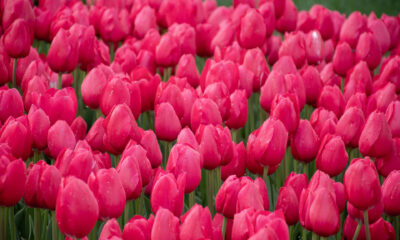LIFESTYLE
The Impact of Tulsi Gabbard Military Background on Her Political Career

Tulsi Gabbard is a name that resonates with many, evoking a mix of admiration and controversy. As the first Hindu elected to Congress and a former presidential candidate, she has carved out a unique space in American politics. But what truly sets her apart? It’s her military background—a pivotal aspect of her identity that influences every decision she makes.
Having served as a major in the Hawaii Army National Guard, Gabbard’s experiences in combat zones have shaped not just her worldview but also her approach to governance. She often draws from these experiences when discussing national security and foreign policy, making her perspectives compelling yet divisive.
As we explore how Gabbard’s military service impacts her political career, we’ll uncover the nuances behind her beliefs and actions. Whether you’re an ardent supporter or critical observer, understanding this key element of Tulsi Gabbard offers valuable insight into both the woman herself and the broader landscape of American politics today.
How her military experience influenced her political views and decisions
Tulsi Gabbard’s military experience has shaped her political perspective in profound ways. Serving as a Major in the Hawaii Army National Guard, she deployed to Iraq and faced the realities of war firsthand. This exposure influenced her views on foreign engagement and military intervention.
Gabbard often emphasizes diplomacy over conflict. Her experiences led her to question conventional strategies that favor military action without considering long-term consequences. She advocates for a more cautious approach to international relations.
Additionally, her service instilled a sense of duty towards veterans’ issues, which she frequently addresses in her campaigns. Understanding the sacrifices made by soldiers allows her to connect with constituents who share similar concerns.
Her unique background sets her apart from many politicians, providing insight rooted in real-world experience rather than theoretical debate. This perspective resonates with voters seeking authenticity and accountability in leadership.
The controversy surrounding Gabbard’s stance on foreign policy
Tulsi Gabbard’s foreign policy views have sparked intense debate. Critics often label her as too sympathetic towards authoritarian regimes. Her meetings with leaders like Bashar al-Assad drew particular ire, leading many to question her judgment.
Supporters argue that she advocates for peace over military intervention. They believe her approach promotes dialogue rather than perpetuating conflict. This non-interventionist stance resonates with those tired of prolonged wars.
However, this perspective has led to accusations of being out of touch with national security realities. Detractors assert that her reluctance to engage militarily could embolden adversaries on the global stage.
The contrast between Gabbard’s ideals and traditional party lines creates a fascinating dynamic within U.
S. politics. Many wonder if her unique viewpoint can bridge divides or merely deepen existing rifts among voters and policymakers alike.
Criticisms and support of Gabbard’s military background in politics
Tulsi Gabbard’s military background has sparked a mix of support and criticism in political circles. Supporters argue that her experience brings authenticity to discussions about national security and foreign policy. They appreciate her firsthand knowledge of the sacrifices made by service members.
Critics, on the other hand, question whether her military service truly informs her decisions or serves as a political tool. Some believe it overshadows her nuanced views, reducing complex issues to simplified narratives.
Moreover, Gabbard’s approach to diplomacy often divides opinions. While some view her non-interventionist stance as refreshing, others see it as naive.
The debate continues over how much weight voters should give to military backgrounds when assessing candidates’ capabilities. In politics, where perceptions matter significantly, Gabbard’s history remains both an asset and a point of contention for many observers.
Comparison to other politicians with military backgrounds
Tulsi Gabbard’s military background sets her apart from many politicians, but she is not alone in this regard. Numerous leaders have donned the uniform before stepping into the political arena.
Consider John McCain, a veteran who became synonymous with foreign policy discussions. His experiences as a POW deeply influenced his views on military intervention and diplomacy. Unlike Gabbard, he often embraced a more hawkish stance.
Then there’s Tammy Duckworth, also an Army veteran. Her approach blends personal experience with advocacy for veterans’ rights and healthcare reform. While both women share similar backgrounds, their political trajectories differ significantly.
Gabbard’s unique perspective stems from her opposition to regime change wars—a position that contrasts sharply with many of her peers who favor interventionist policies. This divergence highlights how individual experiences shape distinct political philosophies even within the same demographic group of military veterans.
Gabbard’s potential future in politics and the role of her military background
Tulsi Gabbard’s military background offers her a unique perspective that resonates with many voters. Having served in the Hawaii Army National Guard, she understands the complexities of foreign policy and national security in ways few politicians do.
Her experiences could pave the way for future roles, whether in local government or higher offices. As political landscapes shift, her dedication to service might attract those seeking authentic leadership grounded in real-life experience.
However, navigating partisan waters remains a challenge. Some may question how her military stance aligns with contemporary progressive values. Yet others see it as an asset that adds depth to debates on defense and diplomacy.
If Gabbard continues to leverage her military insight while addressing current issues, she may find new opportunities ahead. Her journey could inspire other veterans looking to bridge their experiences with public service aspirations.
Conclusion
Tulsi Gabbard’s military background has undeniably shaped her political career and continues to resonate within the fabric of American politics. Her experiences in the U.
S. Army and deployment to Iraq have provided her with a unique perspective on national security, foreign policy, and veteran affairs. This firsthand knowledge informs her approach to governmental issues differently from many of her peers.
Despite facing criticism for some of her stances, particularly regarding foreign interventions, Gabbard’s military service gives credibility to her arguments about prudence in conflict. Supporters argue that it is this very experience that allows her to advocate for peace while understanding the complexities involved in military engagements.
Compared with other politicians who share similar backgrounds, Gabbard stands out not only because of her consistent position against regime change but also due to how she engages with constituents on these matters. As debates surrounding war and peace become increasingly relevant, having someone like Gabbard brings a fresh voice into discussions often dominated by traditional viewpoints.
Looking toward the future of Tulsi Gabbard’s political journey reveals potential paths as varied as they are exciting. Whether she chooses another run for office or decides to influence policy through advocacy work outside elected positions, one thing remains clear: Her military background will continue to shape public perception and inform discourse around critical issues.
The impact of Tulsi Gabbard’s military history reaches beyond mere biography; it challenges established norms within politics while inviting broader conversations about leadership grounded in real-world experience.
LIFESTYLE
Harley-Davidson Insurance: Protecting Your Ride with Confidence

For over a century, Harley-Davidson has embodied the spirit of freedom, adventure, and rebellion. Owning a Harley isn’t just about transportation—it’s a lifestyle. Protecting this prized investment is crucial, which is why Harley-Davidson Insurance offers specialized coverage tailored to riders’ unique needs. In this article, we explore what makes Harley-Davidson Insurance stand out, its benefits, and answers to common questions.
What is Harley-Davidson Insurance?
Harley-Davidson Insurance, administered through H-D Insurance Services, partners with leading insurers to provide motorcycle-specific coverage. Designed by riders for riders, it goes beyond standard policies to address the distinct risks Harley owners face, ensuring peace of mind on every journey.
Benefits of Harley-Davidson Insurance
1. Specialized Coverage:
Policies often include OEM (Original Equipment Manufacturer) parts replacement, accessory coverage, and protection for custom upgrades.
2. Roadside Assistance:
24/7 help for breakdowns, towing, or emergencies.
3. Trip Interruption Coverage:
Reimburses lodging and meals if your ride breaks down far from home.
4. Competitive Rates:
Discounts for safe riders, multi-policy bundling, and completion of certified safety courses.
5. Brand Expertise:
Agents understand Harleys’ value and unique requirements.
Coverage Options
Harley-Davidson Insurance typically includes:
Liability:Covers injuries or property damage you cause.
Collision/Comprehensive: Repairs or replaces your bike after accidents, theft, or natural disasters.
Uninsured Motorist: Protects you if hit by an uninsured driver.
Accessory Coverage: Up to $3,000 (varies by policy) for custom parts and gear.
Optional Add-Ons: Enhanced roadside assistance, rental bike reimbursement, and extended trip coverage.
Conclusion
Harley-Davidson Insurance isn’t just about meeting legal requirements—it’s about safeguarding your passion. With customizable coverage, rider-centric benefits, and trusted expertise, it’s a natural choice for Harley enthusiasts. Whether cruising locally or embarking on a cross-country adventure, ensure your bike is protected by a policy that understands its worth.
Ready to ride with confidence? Contact H-D Insurance Services today for a personalized quote and join the ranks of riders who trust Harley-Davidson to protect their legacy on the road.
FAQs
1. How is H-D Insurance different from other providers?
H-D Insurance specializes in motorcycles, offering rider-focused benefits like OEM parts, trip interruption coverage, and Harley-specific expertise. Many competitors lack these tailored options.
2. What discounts are available?
Discounts may include:
– 10–15% for completing a Motorcycle Safety Foundation (MSF) course.
– Multi-bike or bundling policies (e.g., auto + home).
– Loyalty discounts for long-term customers.
Discounts vary by state and provider.
3. How do I file a claim?
Contact H-D Insurance Services or your agent directly. Claims can often be filed online or via phone, with support guiding you through repairs and approvals.
4. Are aftermarket parts covered?
Yes! Most policies cover aftermarket accessories (e.g., exhausts, seats) up to a specified limit. Review your policy or ask your agent to confirm coverage.
5. Is this insurance only for Harley motorcycles?
While tailored for Harleys, many policies also cover other brands. Confirm eligibility when purchasing.
6. How do I get a quote?
Visit the H-D Insurance website, call an agent, or inquire at a Harley dealership. Have your bike’s VIN, mileage, and riding history ready.
7. Does coverage extend to Canada or Mexico?
Most policies cover rides in the U.S. and Canada. Mexican coverage may require an add-on. Confirm before crossing borders.
LIFESTYLE
From Cricket Star to Political Leader: A Deep Dive into Imran Khan’s Net Worth

Imran Khan is a name that resonates across continents. From the cricket fields of England to the political arenas of Pakistan, his journey has been nothing short of extraordinary. With unmatched charisma and an undeniable passion for both sports and politics, he has captured millions of hearts along the way. As a World Cup-winning cricketer turned Prime Minister, Imran Khan’s life story is filled with triumphs, challenges, and controversies that have shaped not just his career but also Pakistan’s future.
But what about the man behind the legend? How did this cricket star amass wealth while navigating through political turmoil? In this deep dive into Imran Khan’s net worth, we’ll explore how he transitioned from bat to ballot box and examine what defines his financial landscape today. Join us as we unravel the layers behind one of South Asia’s most compelling figures!
Imran Khan’s professional cricket career and achievements
Imran Khan’s cricket career is a tale of passion and excellence. He made his debut for Pakistan in 1971, quickly becoming the backbone of the team. With his all-round capabilities, he transformed matches single-handedly.
His crowning achievement came in 1992 when he captained Pakistan to its first World Cup victory. That iconic win remains etched in history, showcasing his leadership and skill on a global stage.
Khan’s records are impressive; he took over 380 wickets and scored more than 3,800 runs in Test cricket. His unique ability to swing the ball set him apart from contemporaries.
Beyond statistics, Imran inspired a generation with his charisma and sportsmanship. His dedication led to significant milestones that defined an era for Pakistani cricket lovers around the world.
Transition into politics and founding of Pakistan Tehreek-e-Insaf (PTI)
After hanging up his cricket boots, Imran Khan sought a new arena to channel his passion for change. His transition into politics was marked by a vision to uplift Pakistan and address its myriad challenges.
In 1996, he founded the Pakistan Tehreek-e-Insaf (PTI), aiming to create a platform that resonated with the aspirations of ordinary citizens. The party focused on justice, accountability, and anti-corruption measures.
Khan’s charisma drew attention, but initial years were challenging. Political landscapes in Pakistan are often tumultuous, making it hard for newcomers to gain traction. Yet Khan’s determination never wavered; he tirelessly campaigned across regions.
His message began resonating with young voters disillusioned by traditional parties. This momentum gradually positioned PTI as a formidable force in Pakistani politics, setting the stage for future electoral battles ahead.
Political accomplishments and controversies
Imran Khan’s political journey has been marked by both significant accomplishments and notable controversies. After founding Pakistan Tehreek-e-Insaf (PTI) in 1996, he aimed to bring change to Pakistani politics. His party gained momentum over the years, culminating in a historic victory in the 2018 general elections.
Under his leadership, the government launched various reforms focusing on healthcare and education. Initiatives like the Ehsaas Program aimed at poverty alleviation received widespread attention.
However, Khan’s tenure hasn’t been devoid of challenges. Economic struggles have sparked criticism from opposition parties and citizens alike. Additionally, his foreign policy decisions often stirred debate regarding their effectiveness.
His handling of civil rights issues also raised eyebrows among activists who felt marginalized under certain policies. The balance between governance and public expectation remains a tightrope walk for him as he continues navigating these complexities.
Analysis of Imran Khan’s net worth
Imran Khan’s net worth paints a fascinating picture of a man who transitioned from sports stardom to political prominence. Estimates suggest his wealth hovers around $50 million, largely accrued through cricket and subsequent ventures.
His early years as an international cricketer brought not only fame but significant financial rewards. Endorsements and match fees were lucrative during his playing days, setting the stage for future earnings.
Post-retirement, Khan’s investments in real estate further bolstered his bank account. His philanthropic endeavors with Shaukat Khanum Memorial Cancer Hospital also showcase that wealth can be wielded for good.
However, scrutiny surrounds how he maintains this fortune amidst political challenges. The complexities of managing personal finances while leading a nation add layers to understanding his economic landscape.
Sources of income for Imran Khan
Imran Khan’s sources of income are diverse and impressive. His wealth primarily stems from his successful cricket career. As a former international cricketer, he earned substantial sums through contracts, endorsements, and match appearances.
After retiring from cricket, Khan transitioned into the world of business. He invested in various ventures, including real estate and hospitality. These investments have contributed significantly to his financial portfolio.
Additionally, Khan has authored several books that add to his earnings. His writing includes memoirs detailing his life as an athlete and politician.
Khan also benefits from speaking engagements around the globe. His status as a prominent political figure attracts significant fees for public appearances.
Moreover, Imran Khan’s connection with philanthropic activities adds another layer to his financial landscape. Despite diverting funds towards charitable endeavors like Shaukat Khanum Memorial Cancer Hospital & Research Centre, he maintains a lucrative financial standing through these multiple streams of income.
Comparison with other political leaders’ net worth
When evaluating Imran Khan’s net worth, it’s intriguing to compare him with other political leaders globally. Many heads of state have amassed significant fortunes, often through various business ventures before entering politics.
For instance, Donald Trump is known for his real estate empire and branded products. His wealth has been a topic of conversation throughout his presidency and beyond.
In contrast, leaders like Angela Merkel have maintained a relatively modest financial profile despite their long tenures in office. Their focus has remained more on service than personal gain.
Khan’s distinct background as a sports icon adds an interesting layer to this comparison. While some politicians inherit wealth or build it through business acumen, Khan transitioned from cricket stardom into the political arena—shaping perceptions about wealth in leadership roles uniquely. This blend of fame and fortune marks him differently among global counterparts.
Charitable work and philanthropy efforts
Imran Khan is not only known for his achievements in cricket and politics but also for his significant contributions to philanthropy. He has dedicated much of his life to improving healthcare and education in Pakistan.
In 1994, he founded the Shaukat Khanum Memorial Cancer Hospital & Research Centre. This hospital brought world-class cancer treatment to Pakistan, offering services regardless of a patient’s ability to pay. It was a groundbreaking initiative that set new standards in healthcare access.
Additionally, Imran established Namal University, aiming to provide quality higher education. His commitment extends beyond personal gain; it focuses on uplifting communities and empowering individuals through knowledge.
His philanthropic efforts resonate deeply within society, showcasing a leader who prioritizes welfare over wealth accumulation. Such initiatives create lasting change and inspire others to contribute towards societal betterment.
Criticism and controversies surrounding Imran Khan
Imran Khan’s journey from cricket star to political leader is undoubtedly impressive, but it has not been without its share of criticism and controversies. As a prominent figure in Pakistan, his decisions and actions have drawn scrutiny both domestically and internationally.
One major point of contention is his handling of the economy. Critics argue that despite high hopes when he assumed office, economic challenges persist under his leadership. Issues like inflation and unemployment have sparked debates about policy effectiveness. Supporters often counter these arguments by pointing out the inherited challenges left by previous administrations.
His foreign policy choices have also faced backlash. Relations with neighboring countries like India remain tense, leading some analysts to question whether Khan’s approach has fostered peace or escalated conflicts further. His stance on certain global issues has sometimes put him at odds with traditional allies as well.
Furthermore, allegations regarding corruption within PTI add another layer of complexity to Khan’s political narrative. While he campaigned on an anti-corruption platform, any missteps or scandals could undermine public trust in his administration.
Despite these controversies, Imran Khan maintains a substantial following among many Pakistanis who appreciate his charisma and dedication to reforming the country. His ability to navigate through turmoil will likely define how history remembers him—both as an athlete turned politician and as a key player in Pakistan’s evolving landscape.
LIFESTYLE
From Quaint Streets to Scenic Views: Unveiling Small Town Beauty

Small town beauty isn’t just in what you see; it’s also found in the heartwarming interactions with locals who know your name by day two. It’s an experience that contrasts sharply with the hustle and bustle of big cities, offering a slower pace where life can be savored one moment at a time. Join me as we unveil the wonders of small towns—where every street holds history, and every smile tells a story worth sharing.
Exploring the architecture and history
Wandering through the charming streets of a small town is like stepping into a live storybook. Each building whispers tales of yesteryears, with their unique architecture reflecting different eras and styles. You’ll find Victorian facades adorned with intricate details alongside rustic cottages that exude warmth.
Cobblestone pathways guide you past quaint shops and local cafes, often situated in buildings that have stood for generations. The rich history embedded in these structures invites exploration.
Don’t forget to look up; ornate cornices and colorful window boxes add character to every corner. Murals may tell stories of the town’s heritage while inviting visitors to appreciate its artistic spirit.
As you stroll along, breathe in the nostalgia wrapped around each turn. These streets are not just thoroughfares; they are living reminders of community pride and resilience woven together through time.
Unique attractions and activities
Hidden gems often lie just off the beaten path, waiting to be discovered. These unique attractions breathe life into small towns and offer experiences that big cities can’t replicate.
Imagine stumbling upon a quaint local bookstore filled with rare titles. The cozy atmosphere invites you to linger longer than planned. Or perhaps you find a family-run café serving recipes passed down through generations, each bite telling a story.
Artisan markets pop up on weekends, showcasing local crafts and handmade goods. Here, artisans share their passions and stories behind each creation.
Don’t forget about outdoor adventures like secret hiking trails or stunning viewpoints accessible only to those who venture beyond the usual routes. Each hidden corner reveals something special—an old mill turned museum or an unassuming park perfect for picnics.
These attractions create unforgettable memories while highlighting the charm of small town beauty in ways that resonate deeply within visitors’ hearts.
Parks, lakes, and outdoor adventures
Small towns often boast breathtaking natural beauty, where parks and lakes create serene landscapes. Imagine a tranquil afternoon spent by a shimmering lake, surrounded by lush trees that sway softly in the breeze.
These hidden retreats invite you to unwind and embrace nature’s simplicity. You can stroll along winding trails or have a picnic on sun-drenched grass. Each park has its own charm—some feature vibrant flower gardens while others provide stunning views of rolling hills.
For the adventurous spirit, outdoor activities abound. Kayaking on peaceful waters or hiking through scenic routes brings an exhilarating touch to your visit. Wildlife encounters are common as well; keep an eye out for birds flitting about or deer grazing nearby.
No matter where you wander, the connection with nature is palpable in small towns, offering moments of reflection amidst their captivating beauty.
Community Spirit
Small towns thrive on community spirit. Here, people know each other’s names and stories. The sense of belonging is palpable.
Walk down the main street, and you’ll likely encounter friendly faces. Locals often greet you with a warm smile or a wave. It’s this connection that makes small town beauty shine even brighter.
Join in local events to dive deeper into the culture. Farmers’ markets, festivals, and charity drives are common gathering spots where friendships bloom over shared interests.
Every conversation can reveal something new about the town’s history or hidden secrets. Local knowledge transforms your visit from ordinary to memorable.
Engage with artisans at their shops or grab coffee at family-owned cafes. Each interaction offers a glimpse into what makes these places special—stories woven through generations bring life to every corner of town.
Why choose a small town over a big city?
Choosing a small town over a big city brings countless benefits. Imagine stepping outside your front door and being greeted by friendly smiles instead of the rush of strangers. That sense of community is hard to replicate in urban areas.
Small towns offer a slower pace of life, allowing you to savor each moment. You can stroll through charming streets without the chaos and noise that often accompanies metropolitan living.
Affordability plays a significant role too. Housing costs are generally lower, giving you more financial freedom to explore hobbies or travel.
Nature becomes part of your daily routine as well. Access to parks, trails, and scenic views enhances your quality of life in ways that high-rises can’t match.
Embracing local culture means enjoying unique festivals and local businesses rather than generic chains. Each visit feels personal when relationships with shopkeepers develop over time.
It’s about finding joy in simplicity—something cities can seldom provide.
Tips for choosing the perfect destination
When searching for your small town beauty, consider what speaks to you. Are you drawn to vibrant arts scenes or historical landmarks? Each small town has its own character.
Next, dig into local recommendations. Online forums and social media can reveal hidden treasures. Sometimes the best experiences are shared by fellow travelers who know where to go.
Accessibility matters too. Think about travel time and how easy it is to navigate the area. A charming destination should feel welcoming right from the start.
Don’t forget to check seasonal events! Festivals can highlight a town’s spirit and offer unique experiences that showcase local culture.
Embrace spontaneity on your journey. Some of the best small towns are found off-the-beaten-path, waiting for you to discover their charm.
Conclusion
Living in a small town beauty offers a refreshing change from the hustle and bustle of city life. It’s about appreciating the little things—morning coffee at your favorite café, friendly waves from neighbors, and the sound of laughter echoing through quiet streets.
Days unfold slowly here. People take time to connect rather than rushing past each other. There’s an undeniable charm in local traditions; seasonal festivals light up the community spirit and create lasting memories.
Nature becomes an integral part of everyday living. Whether it’s hiking trails or serene lakes, these towns offer breathtaking views that invite you outside to explore.
In embracing this simple lifestyle, one finds fulfillment in genuine connections and unspoiled beauty. The allure lies not just in what you see but also in how it makes you feel—a sense of belonging that is hard to replicate elsewhere.
-

 HOME11 months ago
HOME11 months agoTarget Trends: What’s Hot in Stores Right Now?
-

 BUSINESS11 months ago
BUSINESS11 months agoCustomer Satisfaction: Definition and Importance
-

 HOME11 months ago
HOME11 months agoFrom Ideas to Innovations: How Inventors Change Our World
-

 HOME6 months ago
HOME6 months ago300 Types of Flowers with Names from A to Z (and Pictures)
-

 ENTERTAINMENT11 months ago
ENTERTAINMENT11 months agoFrom Isolation to Community: Strategies for Connecting with Readers
-

 HEALTH11 months ago
HEALTH11 months agoThe Truth About Vasectomies: Myths, Facts, and Everything In Between
-

 TECH10 months ago
TECH10 months agoThe Risks of Disconnecting Your AC Compressor: A Comprehensive Guide
-

 HEALTH11 months ago
HEALTH11 months agoRevitalize Your Waistline: 7 Delicious Flat Stomach Detox Water Recipes for Weight Loss
